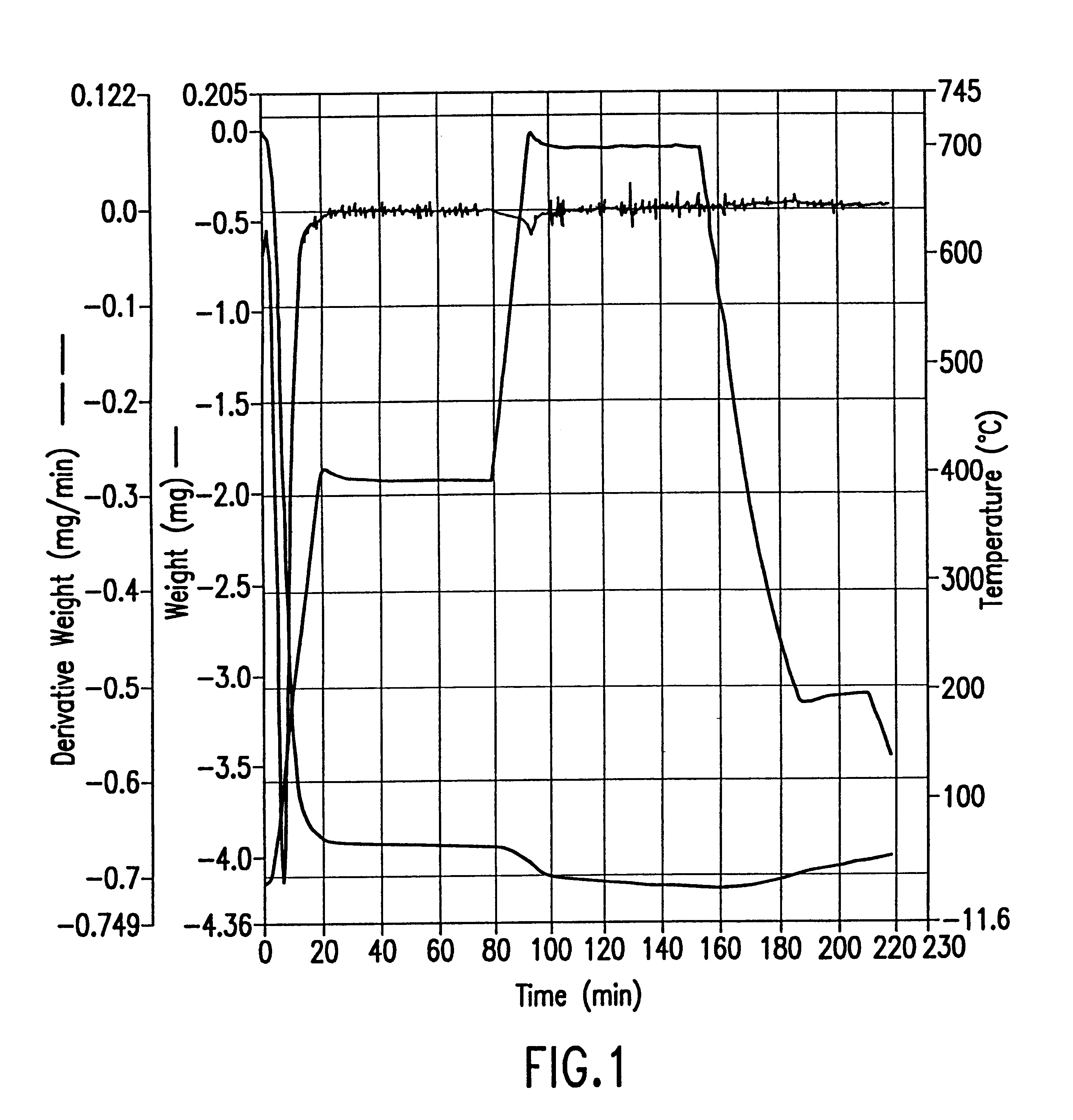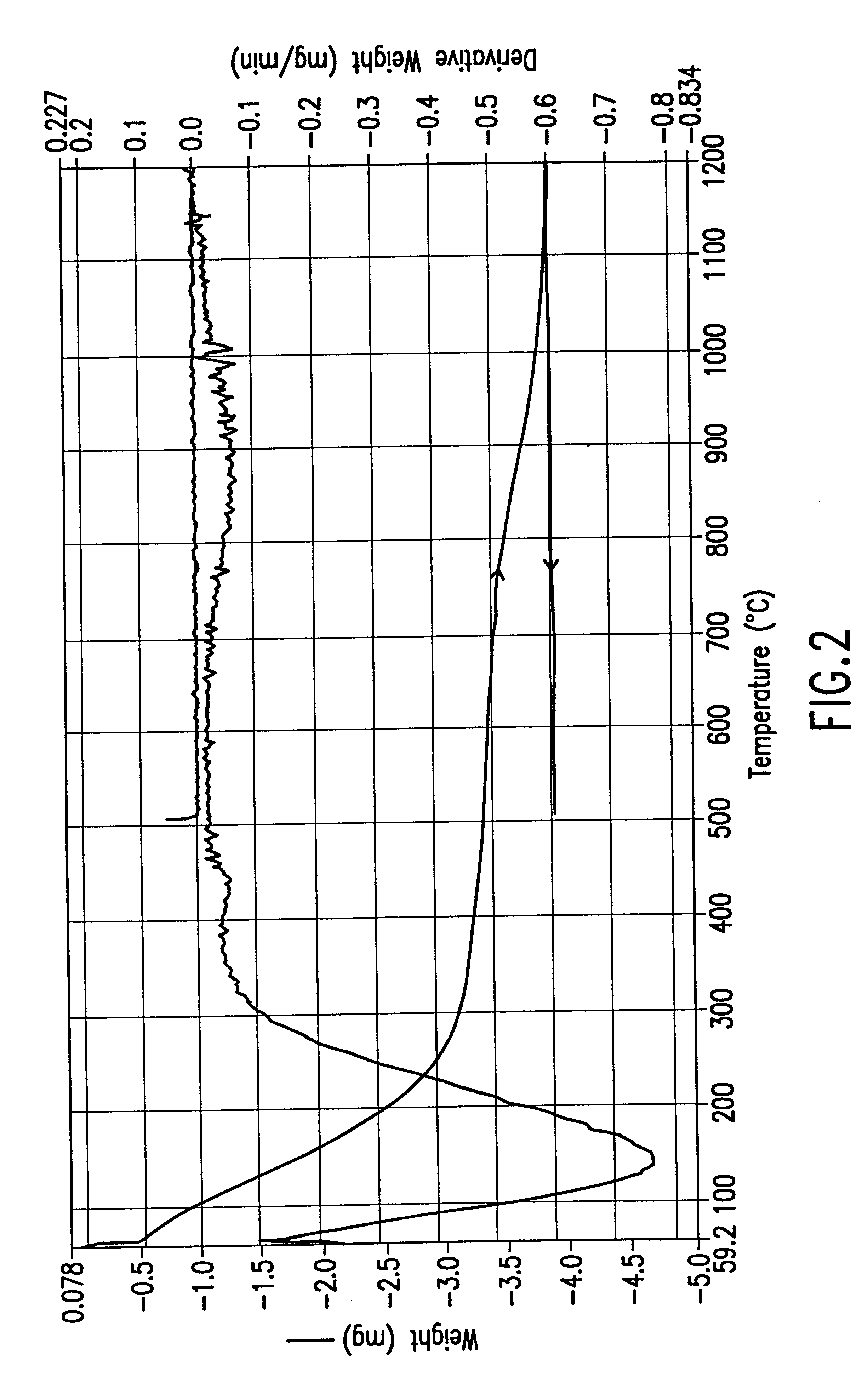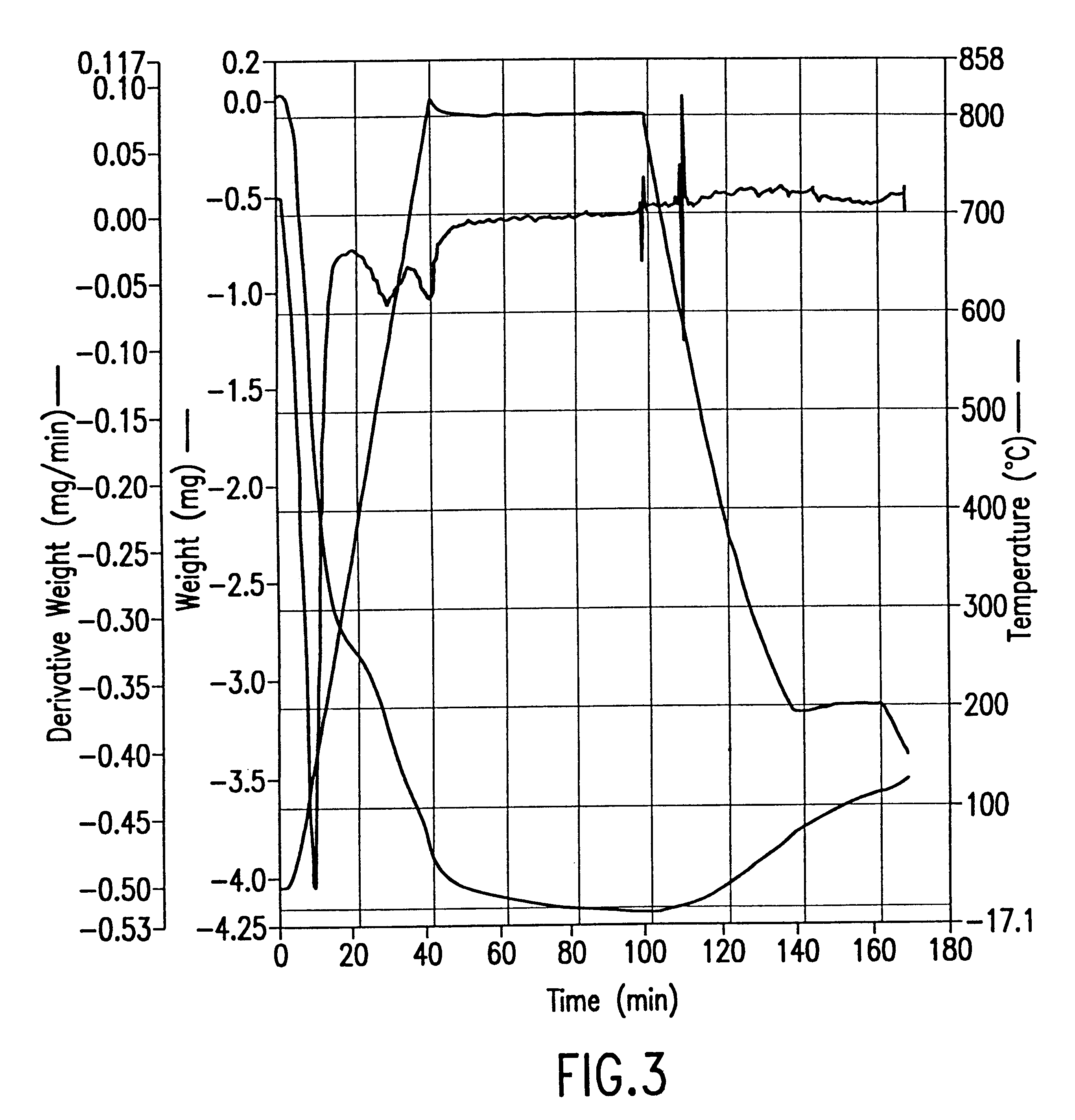Methods for removal of impurity metals from gases using low metal zeolites
a technology of impurity metals and gas, applied in the field of methods, can solve problems such as chemical and physical destruction of zeoli
- Summary
- Abstract
- Description
- Claims
- Application Information
AI Technical Summary
Benefits of technology
Problems solved by technology
Method used
Image
Examples
example 1
Thermogravimetric Analysis (TGA) of Zeolites
Example 1(A)
A 65.900 mg sample of zeolite manufactured by Tosoh, Japan (lot no. HSZ-640H0D, Z-951201, pellet diameter 1.5 mm, bulk density 0.58 g / ml, crush strength (hydrous) 0.22 kg / mmL, surface area (langmuir) 490 m.sup.2 / g, cylindrical pellets with cross sectional diameter 1-1.5 mm) was prepared by briefly purging it with nitrogen. The Thermogravimetric Analysis (TGA) was performed on a Perkin-Elmer TGA-7 thermogravimetric instrument. The sample was heated to 35.degree. C. and held for one minute. The temperature was then increased to 400.degree. C. at a rate of 20.degree. C. per minute and then maintained at 400.degree. C. for one hour during which time essentially all (about 5 mg) of the physically adsorbed water was removed from the sample. The temperature was then increased to 700.degree. C. at a rate of 20.degree. C. per minute and held at 700.degree. C. for approximately one hour. During this time more water was lost, correspondi...
example 1 (
Example 1(M)
A TGA scan of a 73.8 mg sample of PQ Corporation ZSM-5 Type zeolite (Zeolyst International Product No. CBV 3024; silica-to alumina mole ratio: 30; nominal cation form: ammonium; 0.05% (wt) Na.sub.2 O; 375 m.sup.2 / g surface area) was run using the same temperature program described in Example 1(J). The TGA curve for this experiment is presented in FIG. 17. The TGA scan shows about 5.0 mg weight loss during the first ramping (about 6.5% by weight of the sample) and about 0.3 mg weight loss during the second ramping (0.4% by weight of the sample).
example 2
Preparation of Superheated Zeolite by Activation of Tosoh Mordenite at the 1L Scale
Example 2(A)
637.3 grams (about 1.05 liter) of freshly sieved Tosoh mordenite (between 8 and 25 mesh) were charged into a quartz reactor tube (2 inch internal diameter).
The reactor was equipped with a quartz frit to maintain the solid pellets in the downstream direction. A hole in the middle of the frit allowed the introduction of a thermocouple into the reactor (upstream), such that the tip of the thermocouple was placed at about the middle of the zeolite bed. On the other end of the reactor, a Pyrex glass container was attached to the reactor mouth through a wide-mouth glass joint. Prior to and during the activation (heating) run, the container was constantly heated by an external heating tape to about 130.degree. C., to eliminate moisture from the glass. During the activation run, the reactor-container was purged continuously with dry cylinder or house nitrogen which had been passed through a Nanoch...
PUM
| Property | Measurement | Unit |
|---|---|---|
| temperature | aaaaa | aaaaa |
| temperature | aaaaa | aaaaa |
| temperature | aaaaa | aaaaa |
Abstract
Description
Claims
Application Information
 Login to View More
Login to View More - R&D
- Intellectual Property
- Life Sciences
- Materials
- Tech Scout
- Unparalleled Data Quality
- Higher Quality Content
- 60% Fewer Hallucinations
Browse by: Latest US Patents, China's latest patents, Technical Efficacy Thesaurus, Application Domain, Technology Topic, Popular Technical Reports.
© 2025 PatSnap. All rights reserved.Legal|Privacy policy|Modern Slavery Act Transparency Statement|Sitemap|About US| Contact US: help@patsnap.com



